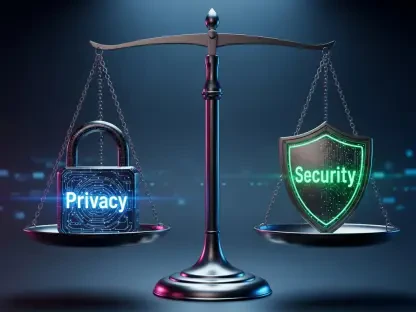In the ever-evolving digital landscape, Chief Information Security Officers (CISOs) find themselves increasingly prioritizing privacy concerns. As privacy regulations update, CISOs need to implement robust strategies to ensure compliance and mitigate risks associated with non-compliance. This article explores the heightened responsibilities, best practices, and steps CISOs can take to navigate new privacy regulations effectively.
The Increasing Role of CISOs in Privacy
CISOs bear the weight of implementing and documenting privacy controls. This expanded role ensures organizational security and aligns procedures with current regulations to manage and protect data privacy. They face immense obligations, given the exacting expectations for risk assessments and compliance documentation.
Meeting State-Specific Regulations
Navigating state-specific regulations is critical for CISOs. Each state, from California to New York, has unique requirements that demand rigorous adherence. Specificity varies, with some states providing clear guidelines and others offering vague mandates, posing challenges for comprehensive compliance. In states like Virginia and Colorado, the clear risk assessment guidelines can be systematically followed to ensure all aspects are covered. However, states like California and New York, with more ambiguous regulations, require CISOs to exercise thorough interpretation and proactive strategies to meet the state mandates.
This diversity necessitates a flexible but robust approach where CISOs must stay updated with regulatory changes and ensure their organizations’ compliance processes are adaptable. Regularly scheduled internal audits and the use of compliance management software can help navigate these challenges more efficiently. Not only do they streamline compliance processes, but they also provide a detailed audit trail which can be crucial during regulatory inspections.
Addressing Third-Party Risks
CISOs must extend their oversight to third-party vendors. Organizations assume accountability for third-party vulnerabilities and breaches, highlighting the importance of robust risk management frameworks. Detailed due diligence and continuous monitoring of third-party security postures become fundamentally essential. When organizations engage with external vendors, securing data shared with these entities becomes a critical aspect of compliance. This scenario necessitates a well-defined third-party risk management policy that outlines the responsibilities and security standards expected from all partners.
Conducting regular security assessments on third-party vendors and insisting on contractual agreements about data security compliance can significantly mitigate risks. This proactive stance ensures that vendors are aligned with the organization’s security requirements and regulatory compliance goals. Moreover, implementing tools that can monitor and provide real-time updates on third-party security performance can help preempt potential risks, making the vendor management process more resilient.
Best Practices for Swift Risk Assessments
Implementing Automated Tools
Automated scanning tools are critical for identifying vulnerabilities within systems. These tools help pinpoint weaknesses in authentication processes, software updates, hardware, and network configurations, allowing swift remediation. The ability to rapidly scan vast networks and systems for vulnerabilities ensures that potential threats are identified and addressed promptly, reducing the risk of data breaches. Such tools can assess both internal and external elements, offering comprehensive insights into an organization’s security landscape.
Integrating automated scanning tools with a broader security information and event management (SIEM) system creates a unified threat detection and response environment. This integration not only enhances threat visibility but also accelerates the overall incident response process. Continuous updates to the scanning tools further ensure they remain aware of the latest threats and compliance requirements, keeping the organization’s defenses robust and adaptable.
Conducting Penetration Testing
Simulating real-world attacks through penetration testing provides deeper insights into an organization’s security posture. This practice helps identify vulnerabilities susceptible to cybercriminal exploits, ensuring a comprehensive understanding of potential risks and threat mitigation. By mimicking tactics, techniques, and procedures used by actual attackers, penetration testing exposes weaknesses that automated tools might overlook. It also assesses the efficacy of existing security controls in real-world scenarios.
The results from penetration tests are invaluable in refining an organization’s defense strategies. Regular engagement in these tests, followed by detailed analysis and implementation of recommendations, roots out security shortcomings at the fundamental level. This rigorous approach ensures continuous improvement in the overall security framework, enabling organizations to stay ahead of emerging threats and maintain a robust security posture.
Engaging Managed Service Providers
Partnering with managed service providers ensures continuous security monitoring and remediation. These partnerships offer 24/7 oversight, enabling organizations to maintain robust security postures, especially during staff unavailability or peak activity periods. Managed service providers (MSPs) bring specialized expertise and resources, facilitating immediate responses to threats and compliance challenges. Their advanced tools and technologies can significantly enhance an organization’s ability to detect, analyze, and mitigate risks in real-time.
Furthermore, MSPs facilitate the sharing of best practices and industry insights, providing the organization with up-to-date knowledge and techniques to counteract threats. This collaboration often results in a streamlined and fortified approach to managing security, where the in-house team can focus on core business activities while relying on their partners for continuous vigilance.
Continuous Remediation and Testing
Continuous remediation and subsequent testing are necessary to validate the effectiveness of security measures. Regular and comprehensive system checks help maintain data integrity, ensuring consistent protection against emerging threats. Post-implementation reviews and testing help in identifying lingering vulnerabilities and confirm that applied remediations are effective. This iterative process of testing and fixing embeds a culture of constant vigilance and adaptation, crucial for robust cybersecurity.
This cycle of testing and remediation should ideally be supported by detailed documentation, enabling tracking of progress over time and providing a clear historical record of security measures and their outcomes. This documentation is invaluable not only for internal monitoring but also for demonstrating compliance during regulatory reviews. Effective and continuous testing fosters a proactive security stance, substantially decreasing the likelihood and impact of security incidents.
The Stakes of Non-Compliance
Routine Assessments
Regular risk assessments, preferably every six months, are critical for maintaining compliance and shielding against data breaches. Thorough documentation of steps taken and future plans ensures readiness for regulatory audits and inquiries. Routine assessments, such as vulnerability assessments and security audits, provide a landscape view of the organization’s current security posture. These evaluations help identify gaps, enable timely updates to existing policies, and ensure all necessary measures align with the latest privacy regulations.
Additionally, structured evaluation processes foster a culture of security awareness across the organization, encouraging continuous improvement and proactive practices. When conducted diligently, these periodic assessments strengthen compliance frameworks and significantly reduce the risk of regulatory penalties and security breaches.
Implications of Insufficient Compliance
In the constantly changing digital world, Chief Information Security Officers (CISOs) are increasingly focusing on privacy concerns. As privacy regulations evolve, CISOs must develop and implement robust strategies to stay compliant and reduce the risks associated with non-compliance. This article delves into the expanded duties and responsibilities of CISOs in the context of evolving privacy laws. It also outlines best practices and actionable steps that CISOs can take to effectively navigate and adapt to new privacy regulations.
By understanding and adhering to these updated privacy requirements, CISOs can ensure their organizations maintain the highest standards of data protection. Amid a landscape where data breaches and cyber threats are ever-present, the ability of a CISO to proactively address privacy concerns is crucial. This proactive approach not only helps in building trust with stakeholders but also safeguards the organization’s reputation, thereby ensuring long-term success in the digital age.









